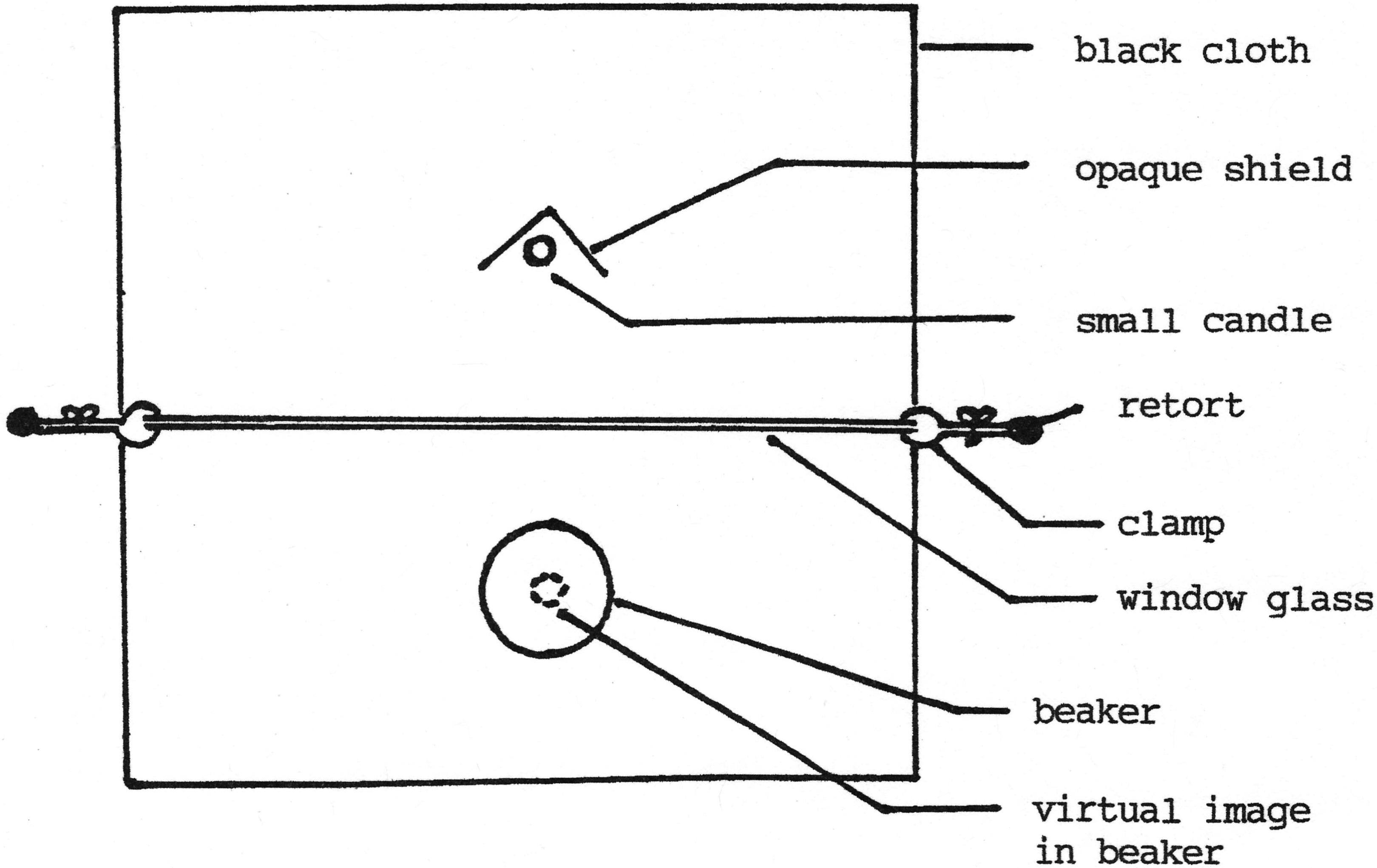Virtual Image Formed by a Plane Mirror
December 01, 1991 Filed in:
Demo CornerT.J. Elgin Wolfe, University of Toronto
An interesting demonstration that makes use of the location of the virtual image formed by a plane mirror can be done with a black cloth, a small candle (about 2 cm in height), a dull dark opaque shield about 3.5 cm tall and bent at right angles, a large pane of thin window glass, two retort stands, 4 adjustable clamps, a 400 mL beaker, and coloured water. To highlight the beaker in the dim light, outline the outer edges (as viewed by the class) with masking tape.
Set up the apparatus as shown in the diagram (top view). Place it on top of the dark, non-reflective cloth before the class arrives. Make the room as dark as possible by closing the drapes, and cover the apparatus with a blanket or sheet.

Have the students close their eyes and rest their heads on the desk. Turn off the overhead lights and light the candle. Mask the candle and its flame from the class using the bent shield. When the students lift their heads and look, the candle will appear to be burning inside a beaker. The mask will obscure the real candle from view.
Ask the students to suggest ways to “extinguish” the candle without blowing on it. They will propose covering the beaker with a glass plate, or pouring water into the beaker. Pour coloured water into the beaker until the water covers the “flame.” Ask students to explain why the candle remains lit.
Have students close their eyes and rest their heads on the desk while you extinguish the real candle and cover the apparatus with a sheet. Divide the class into pairs and challenge each pair to draw a sketch to explain the discrepant event. Discuss their ideas and introduce the term
virtual image.
Column Editor: Ernie McFarland, Physics Department, University of Guelph, Guelph, Ontario, N1G 2W1 Tags: Optics


